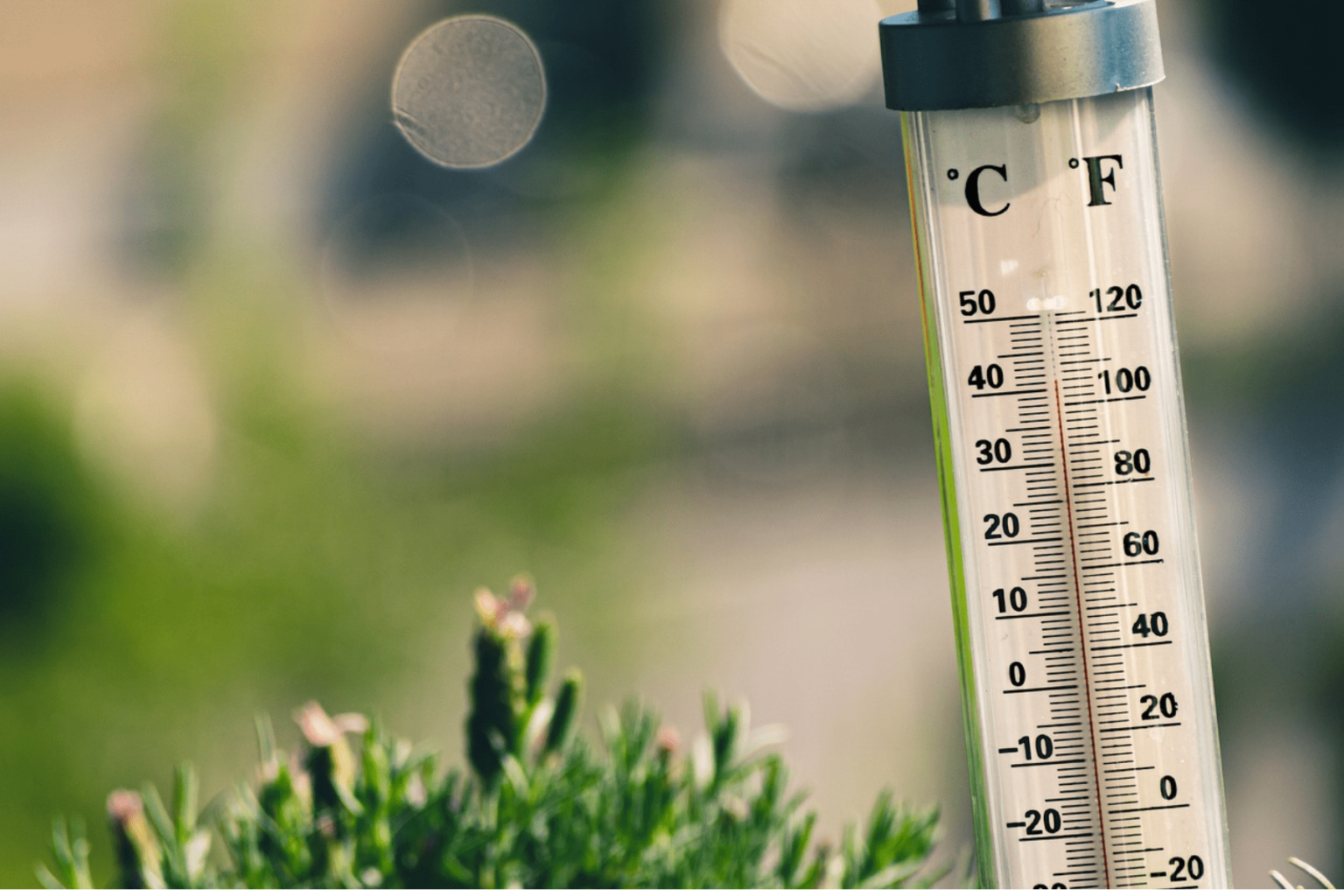Have you ever peeked over your neighbor’s fence and wondered why their landscape seems to be a tropical paradise and yours just isn’t quite there yet?
Or maybe you’ve wondered why some plants in your landscape thrive while others struggle, despite giving them the same care? Don’t worry, you’re not alone.
In this post, we’ll uncover the fascinating world of landscape microclimates right here in St. Louis County.
Understanding these mini-ecosystems in your landscape can be a game-changer. This knowledge will help you expand your plant selection, solve any plant placement issues and cure any common landscape problems.
By the end of this read, you’ll be looking at your yard in a whole new light!
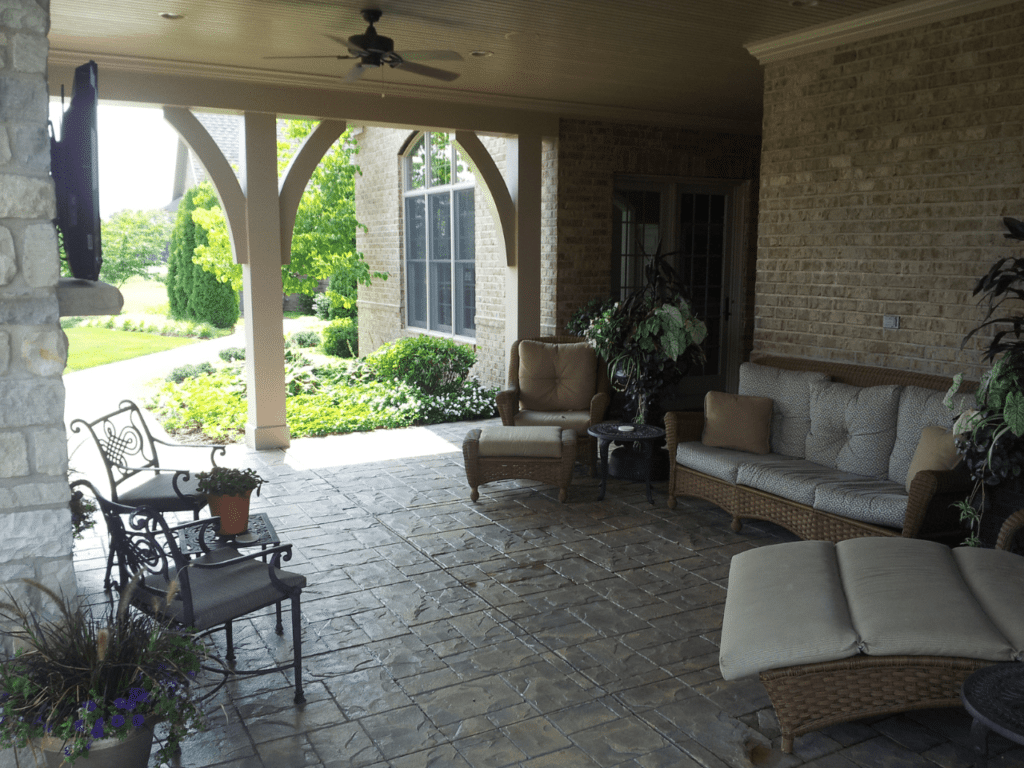
Understanding Microclimates in St. Louis: Why They Matter
Microclimates are small areas in your landscape that differ from the surrounding climate. These miniature pockets of temperature difference are created by variations in topography, soil type, existing plants, and structures.
Microclimates explain why the same plant might thrive in one area and struggle in another. They can influence plant growth rate, blooming time, pest and disease susceptibility, and even soil temperature.
A warm microclimate might encourage early blooming and faster growth, but also attract more pests. On the other hand, a cooler spot could delay spring growth, reduce summer heat stress, but potentially lead to excess moisture.
Microclimate Variations Across St. Louis County
St. Louis County is a patchwork quilt of microclimates. From the inner city pavement to the rich topsoil of North County, the rocky cliffs of South County, and the hills and valleys of West County, each area has its unique climate characteristics.
Urban Heat Islands: A Warmer Microclimate in the Heart of St. Louis
Closer to the city center, the climate tends to warm. These smaller pockets of heat create areas that can host plants considered borderline hardy for our area.
Plants like Cherry Laurel and Crape Myrtle, which typically defoliate or die down every few winters, often thrive in these urban areas.
Challenges of Urban Heat Islands for Landscapes
However, before planning your tropical oasis, remember that urban heat islands come with challenges. The abundance of buildings and paved areas can create toasty conditions, which are hard on many plants.
Additionally, tall buildings can create wind tunnels, causing moisture loss in leaves and needles.
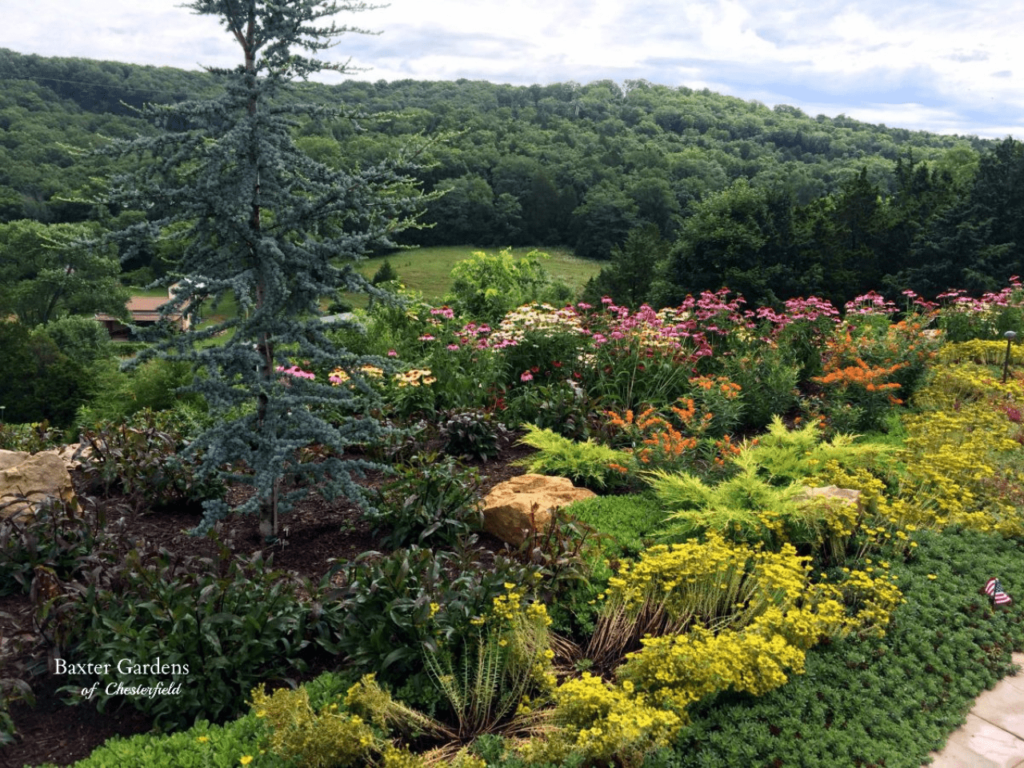
Suburban and Rural Microclimates in St. Louis County
As you head out of the city towards the suburbs, the temperatures often cool, if only by a couple of degrees.
Cooling Effects of Suburban Landscapes
Take Chesterfield valley, for example. Thanks to its location in a valley next to the Missouri River, it often enjoys slightly cooler evenings than other parts of the county. It also sees some of the first frosts of the season and stays cooler longer.
In West St. Louis County, where we’re located, you might find your landscape to be a bit cooler, unless your landscape is basking in full sun on the south side of your house. The abundance of trees and breezes that travel through the hills keep the climate far more mild than where you have an excess of pavement and buildings.
It’s not uncommon for us to recommend different plants for a home in Clayton compared to one in Wildwood. These are two different climate worlds just a short drive apart. And that doesn’t even include the tiny microclimates within your yard!
Practical Steps to Identify Microclimates in Your Yard
Ready to uncover the hidden microclimates in your landscape? The best way is through some good old-fashioned observing.
Grab a thermometer and start monitoring different spots in your yard throughout the day. Begin a garden journal to track which areas warm up, which stay cool, and which follow the general temperature trend.
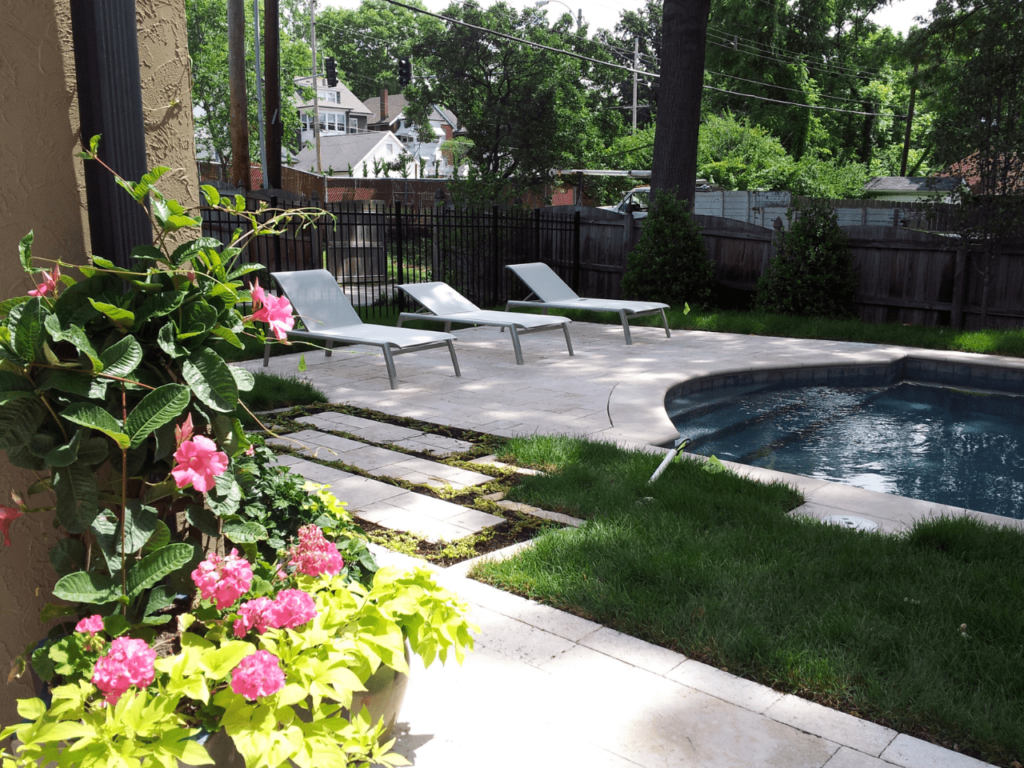
Here are some areas in a yard that commonly affect microclimates:
Understanding Sun and Shade Patterns: Observe when your yard receives sunlight. Is it morning, afternoon, all day, or very little? The intensity of morning and afternoon sun differs, which will play a role in your plant choice.
The Role of Slopes and Elevations: The slope of your yard plays a large role in microclimates. South-facing slopes tend to soak up the heat, while north-facing areas are often cooler. Low spots or valleys will collect cool, damp air, while high points are often windier and drier.
Assessing Wind Exposure and Its Impact on Plants: Pay attention to how the breeze moves through your yard throughout the different seasons. Are you fairly sheltered, or do you host your own wind tunnel? Is your property wide open, or do you have vegetation or structures that slow down the wind’s movement?
Landscape Features that Shape Microclimates: Structures, retaining walls, and even boulders might serve a purpose, but they’re also microclimate makers. They can create warm pockets or cool, shaded retreats.
Water Features as Microclimate Influencers: Bodies of water gain and lose heat slower than the surrounding land, plus they add a touch of humidity. All of this tends to add additional coolness to your yard.
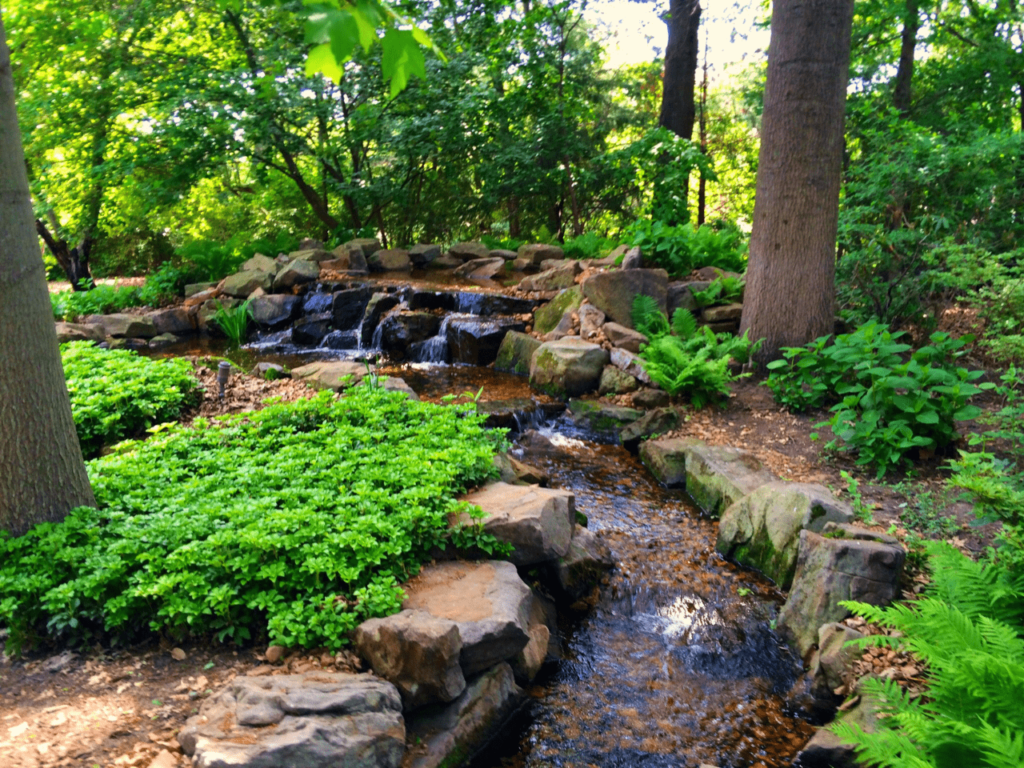
Growing Outside the Zone: Microclimates in Action
Understanding your landscape’s microclimates gives you better control over your garden. It’s the key to choosing plants that will thrive in their environment.
With this knowledge, you can:
- Select plants that are perfectly suited to specific areas
- Provide just the right amount of care for each plant
- Create a diverse and resilient landscape
Expanding Your Plant Choices Beyond Standard Zones
Here’s where the real fun begins. Once you’ve mapped out your microclimates, you might discover you can grow plants outside of our typical plant zone hardiness boundaries.
Those tender plants that usually give St. Louis the cold shoulder? You might have just the right cozy spot in your yard’s microclimate to give them a home!
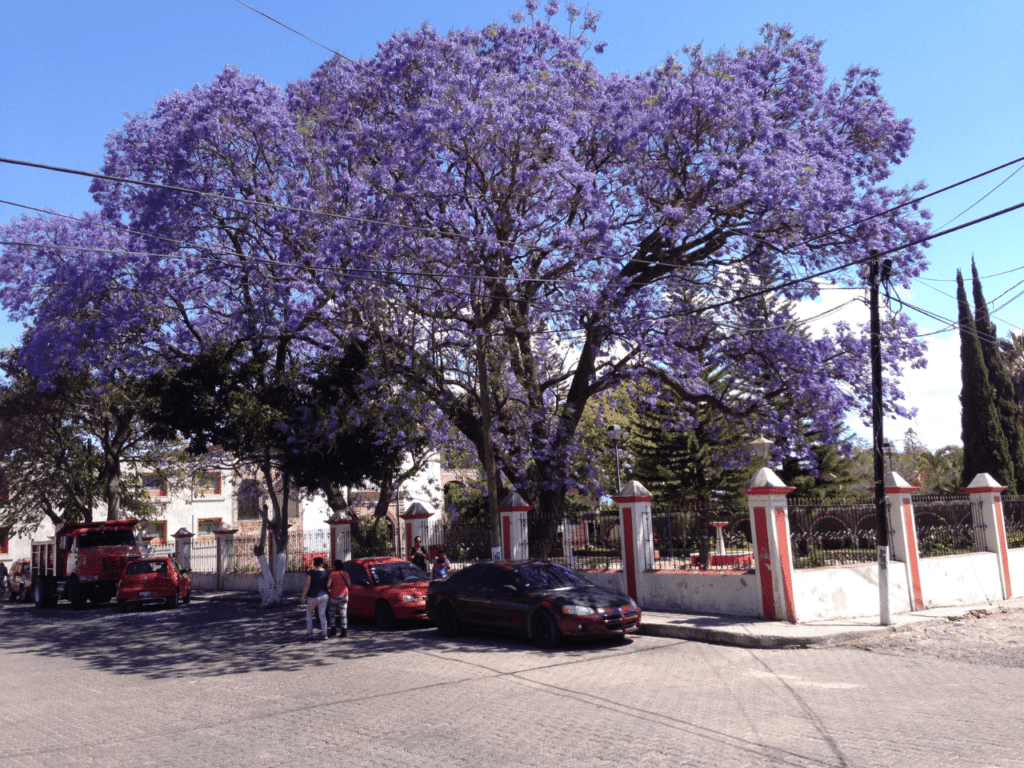
Embracing Risk and Reward with Tender Plants
Now, don’t get me wrong. We’re never going to be able to grow a Jacaranda tree—as cool as that would be. But a plant hardy in zone 7a? It might be worth a try, especially towards the city.
Remember, start slow and expect some loss. Our hardiness zone is based on the average annual temperature.
This means there’s a higher winter temperature and a lower one. That low temperature may not occur often, but when it does, it can cause significant damage.
How Microclimates Can Improve Home Energy Efficiency
Microclimates can be leveraged to improve your home’s energy efficiency. By understanding and utilizing these unique pockets of climate in your landscape, you can create natural solutions for temperature control.
Here are two quick tips on how plants can help improve your home’s energy efficiency:
- Summer Cooling: Strategically plant shade trees to keep things cool.
- Winter Warming: An evergreen windbreak is one of the best ways to block that cold winter wind and reduce heating costs.
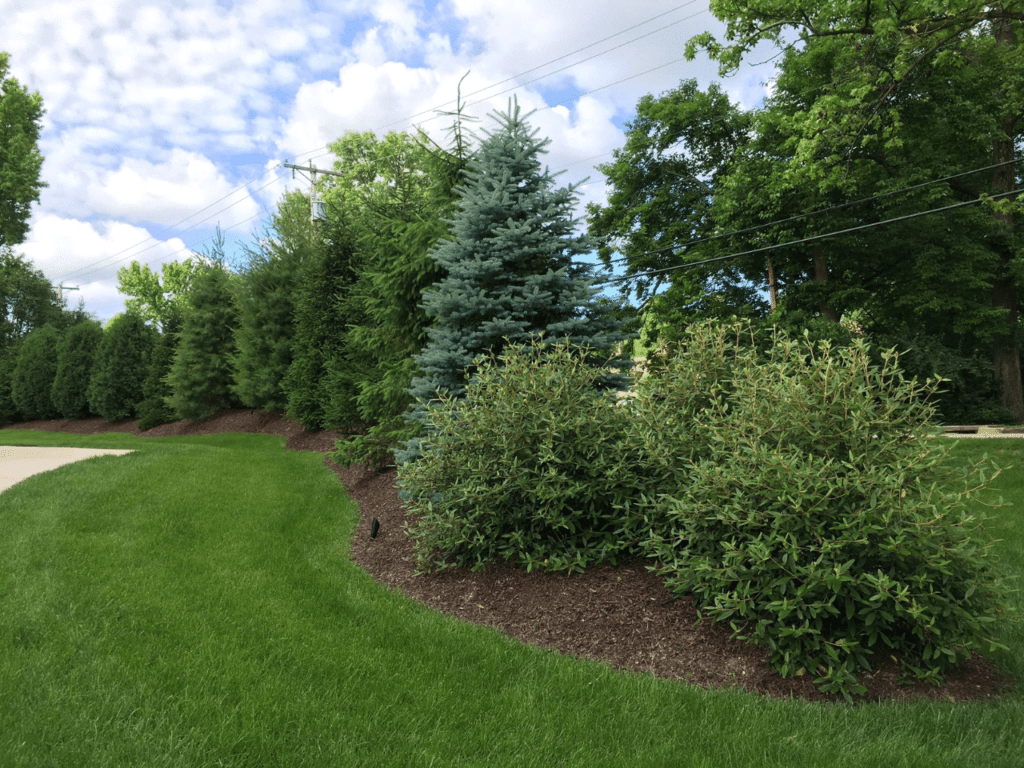
St. Louis’s Urban Heat Dilemma
While St. Louis has its fair share of cold winters, the increasing temperatures in cities have become a huge concern.
Everyone loves a good snow day, at least when they can be stuck at home. However, it’s our summers that are becoming the bigger climate issue.
They’re heating up considerably, a trend especially noticeable in the urban areas of St. Louis County.
Heat Trends in Urban St. Louis
According to the Missouri Coalition for the Environment (MCE), “St. Louis experiences 35-40 days per year with temperatures of 90 degrees or higher and around five days each year” where they “exceed 100 degrees. The combination of dense urban infrastructure and limited green space exacerbates urban heat, leading to consistently higher temperatures, especially during the summer months.”
If that’s not miserable enough, the future forecast is even more concerning. They figure that, at the rate we’re going, in about 30 years, we might be looking at 21 days above 108°F.
That’s a lot to take in. But don’t despair! We can do things to help mitigate the temperature increase.
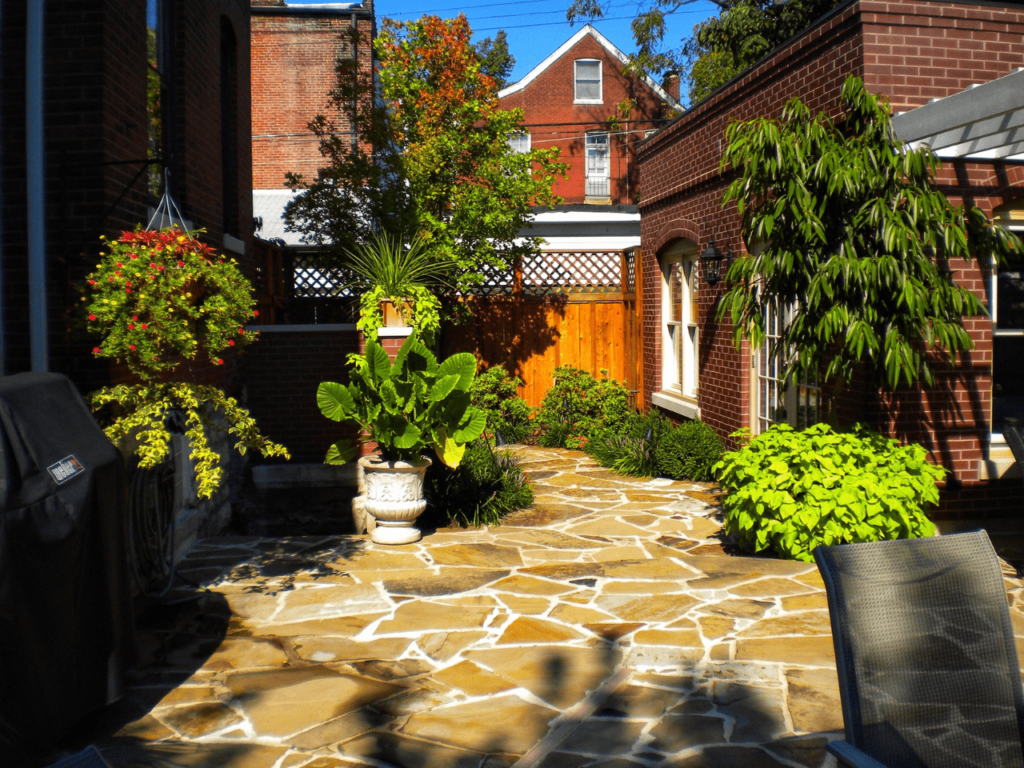
Effective Strategies to Harness Microclimates in Your Landscape
Many of our customers in the Clayton and Ladue areas of St. Louis are directly impacted by the urban heat island. While the suburbs don’t experience the effects as drastically, we all feel the impact on air quality, water quality, health, and general comfort.
Cooling Solutions for Urban Heat Islands
Luckily, we can help with solutions you can use on your property. Here are some ways you can be part of the solution:
- Planting Trees: Trees are natural air conditioners. They provide shade and cool the air through evapotranspiration, which is the combined water evaporation from plant’s foliage and the Earth’s surface.
- Green Roofs and Living Walls: These are great for small spaces. They insulate buildings, reduce energy use, and lower surrounding temperatures.
- Light Hardscaping: For patios, sidewalks, and other paved areas, choose lighter colors. They reflect more sunlight, keeping things cooler underfoot.
- Water Features: Ponds and fountains aren’t just soothing; they’re nature’s cooling system, lowering air temperatures through evaporation.
- Permeable Surfaces: Materials like permeable pavers allow water to seep through, reducing heat absorption and managing water runoff.
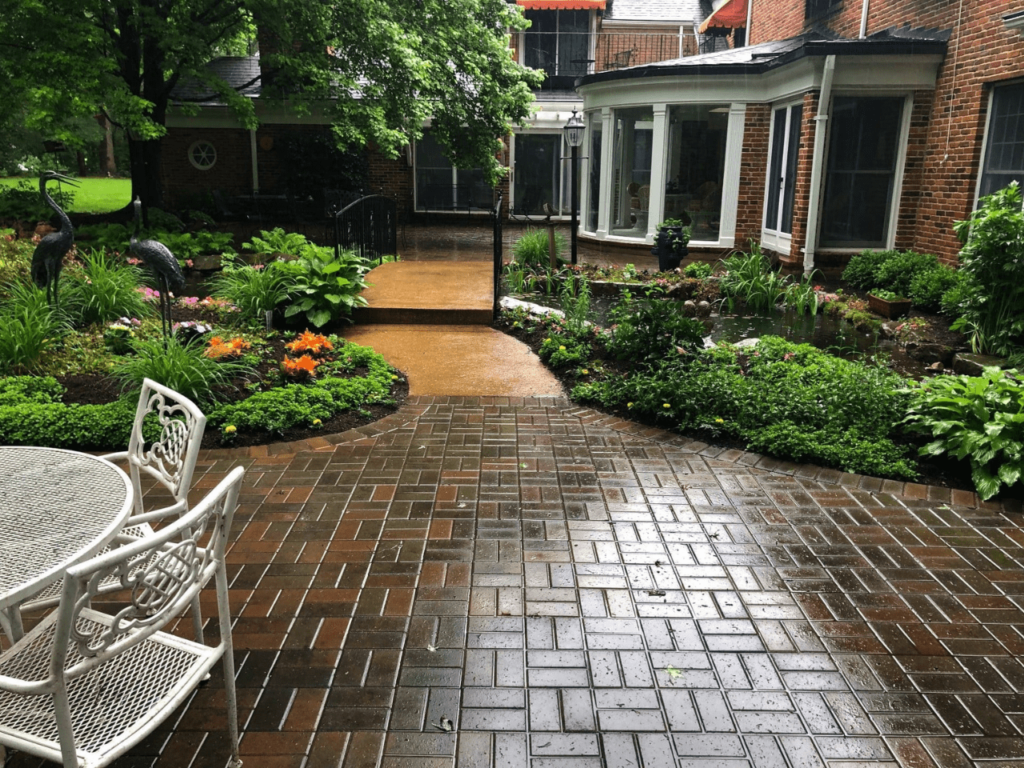
A Practical Guide to Mastering Your Landscape’s Microclimates
Ready to become a microclimate maestro? Here are some practical tips to help you harness your landscape’s unique conditions.
Creating a Garden Journal for Microclimate Tracking: Track temperatures, sunlight patterns, and plant performance throughout the year.
Experimenting with Plant Placement: Don’t hesitate to relocate plants until you find their ideal spot.
Mulch as a Microclimate Tool: Use mulch strategically to regulate soil temperature and moisture. Avoid gravel if you’re aiming to reduce heat in your yard.
DIY Techniques for Custom Microclimates: Get creative. Use trellises or small walls to create shade or wind protection.
Choosing Native Plants for Low-Maintenance Landscaping: Choose plants or cultivars native to our area. They’re adapted to local conditions and often require less maintenance.
Understanding and working with the microclimates in your St. Louis County landscape can transform your gardening experience. By learning about these micro pockets of differing climate, you can grow a wider variety of plants, solve those tricky landscape challenges, and create a beautiful landscape that is resilient and diverse.
Remember, great gardening is as much about watching and learning as it is about digging and planting. As you tune into the microclimates around you, you’ll develop a deeper connection with your outdoor space and the natural world around you.
So grab your thermometer, put on your favorite gardening hat, and start exploring the hidden microclimates in your own backyard.
Ready to transform your St. Louis landscape with microclimate-savvy planting? Our expert team is here to help! Contact us today for a personalized consultation or sign up for our newsletter to receive more gardening tips and tricks tailored to our unique St. Louis climate. Let’s create a thriving, diverse landscape together!
Key Terms for Understanding Microclimates
Microclimate: A small area where the climate differs from the surrounding temperatures.
Topography: The arrangement of hills, valleys, flat ground, and even buildings and walls that make your yard unique. These features influence microclimates.
Urban Heat Island: City areas that are significantly warmer than nearby rural areas due to human activities, buildings, and pavement that absorb heat.
Plant Zone Hardiness: A standard used to determine which plants are most likely to thrive in a specific location, based on average annual minimum winter temperatures.
Full Sun/Partial Sun/Deep Shade: Terms used to describe different levels of sun exposure in a landscape.
Wind Exposure: The degree to which an area is affected by wind, which can influence temperature and moisture levels in a microclimate.
Native Plants: Plants that naturally occur in a particular region and are adapted to local climate conditions.
Evapotranspiration: The combined process of water evaporation from the Earth’s surface and transpiration from vegetation. This process can help determine a plant’s water needs, manage irrigation systems more efficiently, and create cooler microclimates.
Opsal, J. (2024, September 3). Extreme Urban Heat Action Plan. Missouri Coalition for the Environment. https://moenvironment.org/blog/extreme-urban-heat-action-plan/



